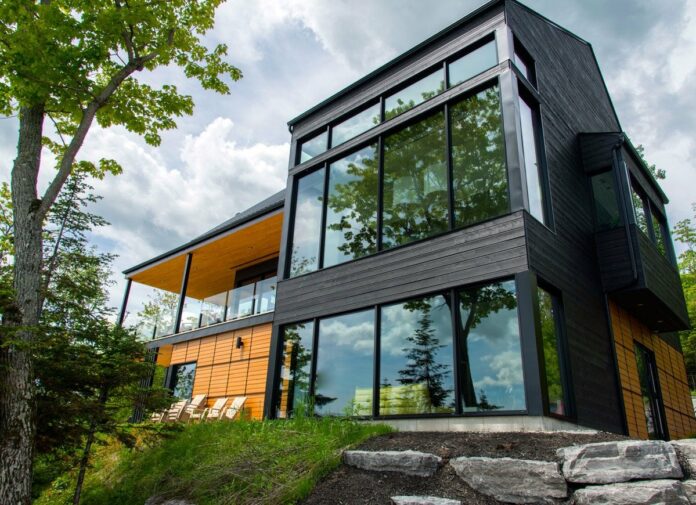
One of the great things about home ownership is you have control over any modifications you want to make. As a renter, you are often at the mercy of your landlord for updates and fixture changes. When you own your home, you can control everything from the visual aesthetics to its energy efficiency. However, all the choices of potential upgrades can be overwhelming, and the costs of making them can add up.
Luckily, there are several options that can increase your love for your home without breaking the bank. And some of these updates will save you money over time as well. Not only can these upgrades enhance your space, but they can help with resale value. Keep reading to learn about ways to upgrade your home with cost efficiency in mind.
1. Heating and Cooling
Your energy bills have a direct correlation to the efficiency of your heating and cooling units. A 20-year-old furnace or air conditioner might work harder or run more frequently compared to a newer unit. Though it adds upfront costs, upgrading to a more energy-conscious system will save you in the long run. Your bills will likely go down, plus you’ll enjoy greater comfort. Homebuyers consider the age of a home’s HVAC equipment when buying, so an updated unit will boost your resale value, too.
Depending on your needs and the size of your home, switching to a mini split could also produce savings. These systems are individual units for heating and cooling. They are ductless, and the conditioned air doesn’t come from a centralized source, as with a furnace. One significant benefit of a mini split is they allow for individual room temperature controls, so no more fighting over the thermostat! They also have great energy ratings, are environmentally friendly, and come in a variety of installations and price points.
2. Windows and Doors
The style of your windows and doors can really add to the overall visual appeal of your home. Windows and doors also provide one of the main barriers against the elements. You’ve likely experienced drafts around old or poorly installed windows or doors that leak air. This is both uncomfortable and wastes energy. Help your HVAC unit work at optimal capacity by installing energy-efficient windows and doors and sealing cracks with caulk or weatherstripping.
Of course, fully replacing all the doors and windows in your home can be pricey. If that’s not quite in the budget yet, look for other cost-efficient ways to seal out nature. You can lower your energy bill by adding blackout curtains or blinds on the windows. Honeycomb cellular shades are another smart choice. They help insulate your rooms and block out the sun.
3. Smart Home Solutions
Adding some tech to your home can give you exciting conveniences and help save you money as well. There are countless options today in the realm of smart home solutions. Start with the capabilities that are most important to you and go from there. If security is paramount, you can install wireless video doorbells and cameras on your home. These can give you peace of mind at a lower price point than traditional home security systems.
Smart light bulbs use less energy than traditional incandescents, and they allow you to set your lights on timers. Thus they both increase energy efficiency and add convenience to your home. Smart thermostats and even mini splits allow you to use apps to control your home’s temperature. While you’re asleep or away, you can set an energy-saving temp, then automatically raise or lower it when you’re up and about. Changes can be made remotely, so you won’t need to kick yourself for leaving the AC at 72 degrees while you’re on vacation.
4. New Appliances
Updating your kitchen appliances can change the look of your room. There’s just something pleasing to the eye when the fridge, stove, and dishwasher all match in color and style. New appliances can greatly boost the resale value of your home as well. As with updating HVAC systems, replacing old appliances will increase your home’s energy efficiency. Some new models even have smart technology features and apps you can access from your phone.
Newer dishwashers, washers, and dryers have impressive features to save you money. Sensors for water levels and dampness will ensure you don’t overfill your washer or run your dryer longer than necessary. As a result, you’ll use less water and electricity for each load. And don’t forget about repairs. Should your new appliances need a fix, they’ll likely still be under warranty, so you won’t face a high out-of-pocket cost.
The Benefits of an Updated Home
Home ownership can be exciting. You get to personalize your space and create the functionality that adds the most convenience and enjoyment to your life. Plus, wise investments in your home will earn a return when it comes time to sell.
That said, homeownership is not without difficulties. Unexpected repairs and crises can pop up, and that can be stressful. So save for the unexpected, and plan for the updates you will want to make in the future. If your dishwasher is 15 years old, for example, start saving for the day it dies. When it does, you’ll be able to buy a new, more energy-efficient model without putting it on a credit card.
When making home upgrades, keep resource conservation in mind. Not only will that save you big money, but you’ll be doing the planet a favor at the same time.











